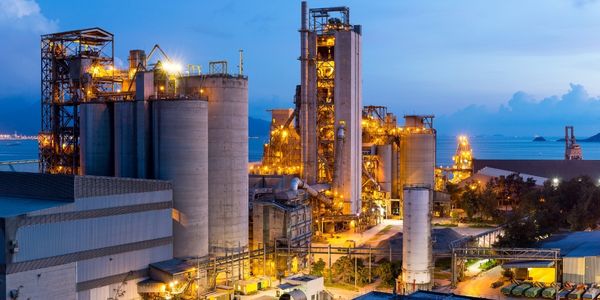Holcim (Brazil) S.A. - Fabrica Barroso: Simulation Reduces Operational Testing Costs of Dynamic Separators by Approximately 30 Percent

Technology Category
- Analytics & Modeling - Digital Twin / Simulation
- Sensors - Liquid Detection Sensors
Applicable Industries
- Cement
- Equipment & Machinery
Applicable Functions
- Quality Assurance
Use Cases
- Digital Twin
- Virtual Reality
Services
- Testing & Certification
About The Customer
Holcim (Brazil) S.A. is a leading global supplier of cement, aggregates, and concrete products in Brazil. The company has an annual cement production capacity of five million tons and operates four cement plants, two aggregates quarries, and 55 concrete plants. These operations employ more than 1,600 people across nine regions. To sustain its global position, the company is always on the lookout for technology gains that can reduce operational costs and increase production efficiency.
The Challenge
Holcim (Brazil) S.A., a leading global supplier of cement, aggregates, and concrete products in Brazil, was facing a challenge in the regulation of particle size used in creating cement. The size of these particles can significantly affect the efficiency of the cement production line. The company was seeking technology gains that could reduce operational costs and increase production efficiency. The challenge was to replace the expensive and time-consuming trial-and-error testing of separator performance with computer modeling. They also needed to simulate and classify the particles’ paths as a function of particle diameter to consider possible improvements that would increase separation efficiency.
The Solution
To address these challenges, Holcim brought in Engineering Simulation and Scientific Software Ltda. (ESSS), a leading engineering simulation solution company based in Brazil. With the support of ESSS, Holcim chose ANSYS CFX technology to analyze the gas–solid flow for one of their first-generation, traditional-design dynamic separators. A mesh of 2.7 million nodes was generated using ANSYS ICEM CFD meshing software. The simulation of the stationary state was performed using the ANSYS CFX SST turbulence model for the continuous phase. The dispersed phase was modeled using the Lagrangian approach with one-way coupling to the continuous phase. The dispersion of particles due to turbulence was accounted for in the simulations, along with the particle drag and weight.
Operational Impact
Quantitative Benefit

Case Study missing?
Start adding your own!
Register with your work email and create a new case study profile for your business.
Related Case Studies.

Case Study
Smart Water Filtration Systems
Before working with Ayla Networks, Ozner was already using cloud connectivity to identify and solve water-filtration system malfunctions as well as to monitor filter cartridges for replacements.But, in June 2015, Ozner executives talked with Ayla about how the company might further improve its water systems with IoT technology. They liked what they heard from Ayla, but the executives needed to be sure that Ayla’s Agile IoT Platform provided the security and reliability Ozner required.

Case Study
IoT enabled Fleet Management with MindSphere
In view of growing competition, Gämmerler had a strong need to remain competitive via process optimization, reliability and gentle handling of printed products, even at highest press speeds. In addition, a digitalization initiative also included developing a key differentiation via data-driven services offers.

Case Study
Predictive Maintenance for Industrial Chillers
For global leaders in the industrial chiller manufacturing, reliability of the entire production process is of the utmost importance. Chillers are refrigeration systems that produce ice water to provide cooling for a process or industrial application. One of those leaders sought a way to respond to asset performance issues, even before they occur. The intelligence to guarantee maximum reliability of cooling devices is embedded (pre-alarming). A pre-alarming phase means that the cooling device still works, but symptoms may appear, telling manufacturers that a failure is likely to occur in the near future. Chillers who are not internet connected at that moment, provide little insight in this pre-alarming phase.

Case Study
Premium Appliance Producer Innovates with Internet of Everything
Sub-Zero faced the largest product launch in the company’s history:It wanted to launch 60 new products as scheduled while simultaneously opening a new “greenfield” production facility, yet still adhering to stringent quality requirements and manage issues from new supply-chain partners. A the same time, it wanted to increase staff productivity time and collaboration while reducing travel and costs.

Case Study
System 800xA at Indian Cement Plants
Chettinad Cement recognized that further efficiencies could be achieved in its cement manufacturing process. It looked to investing in comprehensive operational and control technologies to manage and derive productivity and energy efficiency gains from the assets on Line 2, their second plant in India.

Case Study
Integration of PLC with IoT for Bosch Rexroth
The application arises from the need to monitor and anticipate the problems of one or more machines managed by a PLC. These problems, often resulting from the accumulation over time of small discrepancies, require, when they occur, ex post technical operations maintenance.


